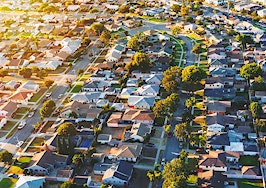Have you been wondering how to shoot professional-looking photos lately? I interviewed Peter Schravemade from BoxBrownie via email to get his take on the topic. With its team of photo-editing experts, the company offers a myriad of digital services for enhancing images to high-quality photos that impress.

Peter Schravemade
This is the first of a three-part series. Stay tuned, as next week, we’ll cover all things 360-tour-related and then wrap up Part 3 with information about virtual renovations and 3D renderings.
(Note: This interview was edited for grammar and style).
What is professional property photography?
There are three parts to professional photography: the preparation, the shoot itself and the photo editing. We define professional photography to be the sum of all of these together, creating a clear image that not only displays the property in its best light, but also demonstrates clearly what the human eye will see at the property.
Professional property images will be shot using a wide-angle lens with straightened verticals. They will also have exterior window detail.
Why are professional quality photos so important?
Statistically, homes with professional photography sell faster and for more money. Images also form the starting point for the entire real estate transaction process, meaning it’s very hard to sell a home without some kind of digital representation of the home itself.
Good imagery has been the No. 1 requested item by purchasers for the better part of a decade, and importantly, [it] forms the first impression of the home, yourself as an agent and your brand (whether independent or a franchise).
Because it’s the only thing people will see on the MLS or any portal or an aggregator, it really is the most important part to get right. After all, if you have the best virtual tour in the world but poor imagery, potential purchasers may not even click through on the front image to access the tour.
What is a BoxBrownie?
BoxBrownie is the colloquial term given to one of the longest-running pieces of camera hardware in photography history that was unsurprisingly shaped like a box.
In about 1901, the Eastman Kodak company released the “Brownie” camera, which was really the first camera that parents could afford to purchase. The slogan for the “Brownie” on release was: “You take the photo, we do the rest.” Enter the modern day BoxBrownie.com company.
Do I need a DSLR camera?
Two years ago, I would have argued that you would need one to achieve professional standards. Unbelievably, with the advancement of smartphones, we have developed a technique coupled with a third-party application, tripod and smartphone mount, that allows the user to take photos that, coupled with editing, are of a very high, professional-quality standard. Regardless, the better the camera, the better the end product.
What is the best camera for shooting real estate?
There are several elements you can look for. The most important element is to find one that allows you to shoot in brackets.
The second most important aspect is to find a camera with a wide-angle lens. This allows you to shoot small rooms like bathrooms, for example. Other important elements would be output resolution, ability to use a flash, and of course, ease of use.
Do I need a tripod?
If you are intent on shooting single exposure, a tripod is not essential. If you are intent on shooting professionally (bracketing), you must use a tripod as the process involves several images which all need to be of the exact same frame. I would certainly advise using one.
How do I shoot a bathroom?
The smaller bathrooms are always the hardest and, in many instances, you just can’t shoot the bathroom without being caught in the mirror.
Try to find a vantage point where you can capture as much of the room as possible, and use a wide-angle lens. With regards to photographer reflection, most good photography editors will remove that as part of their image enhancement product.
What is the best time of day to shoot?
Generally, any time between 10 a.m. and 2 p.m. in most locations are your golden four hours. You really don’t want to be shooting into the sun if you can avoid that, and the less shadows, the better the property will display after editing.
Where is the best place in the room to take a photo?
This obviously depends on the room, but nearly always, it’s in the corner of a room. You will be trying to maximize the amount of the room you’re showing in the actual image. The potential for most rooms generally sits in a corner. Remember that it’s always better to take more images than less and decide later.
What if the lighting is not very good?
When shooting inside a home, it’s always good to have all the lights on. If you can, also open up any interior doors. If you are using the bracketing process to shoot, aside from shooting in the dark, lighting almost becomes irrelevant.
Interestingly, a lot of photographers won’t shoot on an overcast day or in the rain. Light rain and overcast conditions are quite often better days to shoot a property because of the lovely natural white light that’s nearly always present. Perhaps the only time not to shoot is in the dark.
What is bracketing? How do I do it?
It’s really important to understand that there is no camera that can capture what the human eye does in real time. So, for example, if you take a picture inside a property looking out, either the inside or the outside of the home will not match what the eye actually sees.
It’s important to understand that a professional photographer simply shooting images may not give you a professional-quality image. This is because not all photographers are photo editors.
Bracketing is the name of a technique for shooting property imagery. It will involve a camera and a tripod and sometimes a flash. The concept is to capture between three to seven images at different light resolutions. These three to seven images are merged together to create one clear image. If you are committed to acting in the best interest of the seller, this really is the only way to present a property to market.
What image enhancement services does BoxBrownie offer?
We offer just about every type of image edit known to man. “Image enhancement” (24 hours) is the professional enhancement of photos for property. “Twilight conversion” (24 hours) is the conversion of a daytime image to a beautiful twilight.
“Item removal” (24 hours) is an edit whereby we remove items in the picture that are not relevant to the sale, like furniture or a car in the driveway (where it’s ethical to do so).
“Virtual staging” (48 hours) is the digital addition of furniture to a vacant image. Importantly, virtual staging only involves the addition of furniture and decor, not fixtures or fittings.
“Virtual renovation” (seven to 14 days) is the digital renovation of a home or part thereof. It could be a kitchen makeover, a facade change, landscaping — really anything. “Aerial editing” (24 hours) is generally used for highlighting a property taken by a drone.
How many photos do you recommend per listing?
We believe that you should be able to tell the story of most average-sized properties in 20 pictures. I’m aware there are MLSs that are teaching “the more, the merrier” when it comes to imagery. I’m not in agreement with this idea, and I believe it promotes the concept of taking pictures irrelevant to the sale.
We know, globally, because of portal statistics out of the U.K. and Australia, that after 25 images, less than 3 percent of your purchasers are still viewing your listing, but I have no hard-and-fast statistics on this in the U.S.
One thing is clear — regardless of however many images you choose to upload, you need to tell the story of the property in 20 images or less.
What if it is cloudy the day of the photo shoot?
Cloudy days are quite often the best days for a photo shoot, simply because the ambient light tends to be white and bounces off the property, giving a truer sense of color. The grey skies can be replaced by a good editing team in post-production. There are no shadows on overcast days so day-to-dusk edits can look extremely realistic.
How do agents and photographers get those cool dusk shots?
The best results are generally attained by sending a professional photographer to the site before dusk. The alternative is a twilight conversion edit, which ironically was developed by photographers who had been sent to site to get that glorious sunset shot, but alas, had encountered a cloudy day. The edit takes a daytime image and digitally converts that image to twilight.
If the property is vacant, is it worth virtually staging?
It’s important to remember that we, as agents, run around with what I refer to as “agent glasses.” It was only in 2002 when I realized that most purchasers don’t regularly view vacant homes, as opposed to agents who are constantly looking at homes without furniture.
It can be quite confusing to see vacant images online and consequently try to imagine living in that space. Virtual staging is proven to attract more purchasers and definitely allows them to [visualize] the space at the property. NAR has some excellent statistics on home staging here.
What if the homeowner or renter wasn’t able to declutter?
You are always able to remove the tenant’s or owner’s belongings (including furniture) and replace them using the virtual staging edit. This can be particularly handy when elderly clients’ furniture may stand in the way of people inspecting the property.
It is often quite difficult to have a conversation with older clients in order to ask them to remove family heirloom pieces, and most times, it’s impractical.
Brandon Doyle is a Realtor at Doyle Real Estate Team — Re/Max Results in Minneapolis and co-author of Mindset, Methods & Metrics – Winning as a Modern Real Estate Agent. You can follow him on Twitter.













